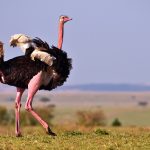
- Ngorongoro Crater
-
Written by : Beauty Of Creation
Ngorongoro Crater Safari and Tour: A Comprehensive Guide to Tanzania’s Natural Wonder
Ngorongoro Crater is a must-see destination for nature enthusiasts, wildlife lovers, and adventure seekers alike. Located in Tanzania, this natural wonder is the largest unbroken caldera in the world, with a variety of wildlife and stunning landscapes. In this article, we will explore everything you need to know about Ngorongoro Crater Safari and Tour, including its history, location, the best time to visit, wildlife, and more.
Ngorongoro Crater is a UNESCO World Heritage Site and a conservation area in Tanzania. It is one of the most stunning natural wonders in Africa, with a unique ecosystem and a variety of wildlife. The crater is home to over 25,000 animals, including the famous Big Five – lions, elephants, leopards, rhinos, and buffalos. It is also an excellent destination for bird watching and hiking, with breathtaking views of the surrounding landscapes.
History of Ngorongoro Crater
The history of Ngorongoro Crater dates back to over two million years ago when a massive volcanic eruption created a caldera that eventually filled with water, forming a lake. The lake eventually dried up, and the fertile soil became a haven for wildlife. The Maasai people have lived in the area for centuries and have coexisted with the animals, forming a unique cultural landscape. In 1959, the area was declared a conservation area, and in 1979, it was recognized as a UNESCO World Heritage Site.
Location and How to Get There
Ngorongoro Crater is located in northern Tanzania, about 180 kilometers west of Arusha. The crater is part of the Ngorongoro Conservation Area, which also includes the Oldupai Gorge, a famous archaeological site. The easiest way to get to Ngorongoro Crater is by flying to Kilimanjaro International Airport or Arusha Airport and then driving to the crater. Alternatively, you can take a bus or a train to Arusha and then take a taxi or a shuttle to the crater.
Best Time to Visit
The best time to visit Ngorongoro Crater is during the dry season, from June to October. During this time, the weather is pleasant, and the wildlife is easier to spot as they gather around waterholes. The wet season, from November to May, is also a good time to visit as the landscape is lush and green, and there are fewer tourists. However, the roads can be challenging to navigate, and some lodges may be closed due to flooding.
Accommodation Options
There are various accommodation options in and around Ngorongoro Crater, ranging from budget-friendly camping sites to luxurious lodges. Some of the popular lodges include Ngorongoro Crater Lodge, Ngorongoro Serena Safari Lodge, and Ngorongoro Wildlife Lodge. Camping is also allowed in designated campsites, but you need to bring your camping gear and food.
Wildlife in Ngorongoro Crater
wildlife, including lions, leopards, cheetahs, elephants, buffalos, and rhinos, making it one of the best places in Africa to see the Big Five. You can also spot giraffes, zebras, wildebeests, hyenas, hippos, and various antelopes. The crater is also a haven for bird watchers, with over 500 species of birds recorded in the area.
Safari and Tour Options
There are various safari and tour options available in Ngorongoro Crater, ranging from day tours to multi-day safaris. Most tours include game drives, where you can spot wildlife and explore the different landscapes of the crater. You can also opt for a walking safari, where you can explore the area on foot and get up close to the animals. Hot air balloon safaris are also available, offering a unique perspective of the crater from above.
Cultural Tours
Ngorongoro Crater is not just about wildlife and nature; it is also a cultural landscape. The Maasai people have lived in the area for centuries and have a unique way of life that is worth exploring. You can opt for a cultural tour, where you can visit a Maasai village and learn about their traditions, customs, and way of life.
Hiking and Trekking
For those looking for a more active adventure, hiking and trekking in Ngorongoro Crater is an excellent option. There are various hiking trails in the area, ranging from easy to challenging. You can hike to the Olmoti Crater, a dormant volcano with stunning views of the surrounding area. You can also hike to the Empakai Crater, which is home to a beautiful lake and a variety of bird species.
Other Activities
Apart from safari, cultural tours, and hiking, there are other activities you can enjoy in Ngorongoro Crater. You can go horseback riding, or mountain biking, or visit the Oldupai Gorge, a famous archaeological site that has revealed some of the earliest human fossils.
Safety Tips
While Ngorongoro Crater is a safe destination, it is always important to take precautions to ensure your safety. Always listen to your guide’s instructions, keep a safe distance from the animals, and never get out of your vehicle in the park. It is also recommended to get vaccinated before traveling to Tanzania and to carry insect repellent and sunscreen.
Sustainability Efforts
Ngorongoro Crater is a conservation area, and sustainability efforts are at the core of its management. The Maasai people are actively involved in the conservation of the area, and their traditional way of life is preserved. The lodges and campsites in the area follow eco-friendly practices, such as using solar power and recycling waste.
Ngorongoro Crater Safari and Tour is a once-in-a-lifetime experience that offers a unique combination of wildlife, nature, and culture. Whether you are a wildlife enthusiast, a nature lover, or an adventure seeker, Ngorongoro Crater has something for everyone. From the Big Five to cultural tours and hiking, the area is full of opportunities to explore and discover.
FAQs
Is it safe to visit Ngorongoro Crater?
Yes, Ngorongoro Crater is a safe destination. However, it is important to take precautions to ensure your safety, such as listening to your guide’s instructions and keeping a safe distance from the animals.What is the best time to visit Ngorongoro Crater?
The best time to visit Ngorongoro Crater is from June to October, which is the dry season. During this time, the vegetation is less dense, making it easier to spot wildlife. The weather is also mild, with cool temperatures in the morning and evening.
Do I need a visa to visit Tanzania?
Yes, most visitors to Tanzania require a visa. You can apply for a visa online or at the Tanzanian embassy in your country.What is the cost of a Ngorongoro Crater safari or tour?
The cost of a Ngorongoro Crater safari or tour varies depending on the duration, type of accommodation, and activities included. It is best to research different tour operators and compare prices to find the best option for you.What should I pack for a Ngorongoro Crater safari or tour?
It is recommended to pack lightweight clothing for warm weather during the day and warm layers for cool evenings. Comfortable hiking shoes, insect repellent, sunscreen, and a hat are also essential. Don’t forget to bring a camera to capture the amazing wildlife and landscapes!Can I see the wildebeest migration in Ngorongoro Crater?
No, the wildebeest migration does not pass through Ngorongoro Crater. However, nearby Serengeti National Park is one of the best places in Africa to witness the migration.
In summary, Ngorongoro Crater Safari and Tour is a must-visit destination for anyone interested in wildlife, nature, and culture. With a diverse range of activities and experiences, there is something for everyone to enjoy. Take the necessary safety precautions, pack your bags, and get ready for an unforgettable adventure in one of Africa’s most iconic destinations.
Best of Our Tanzania Safaris
From the Wildebeest Migration to the Big 5 and Tropical White Sand Beaches
Explore the best of Tanzania with our curated collection of safaris packages. Experience breathtaking wildlife, stunning landscapes and cultural richness, there’s something for everyone.


